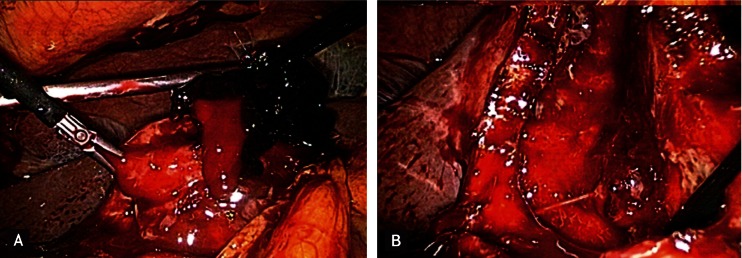 |
 |
| Korean J Intern Med > Volume 28(3); 2013 > Article |
|
An 84-year-old male patient was admitted with abrupt-onset epigastric pain for 1 day. He had been taking an antihypertensive drug for 10 years, but no aspirin or antiplatelet drugs. At admission, his blood pressure was 130/80 mmHg, heart rate 80 beats per minute, respiratory rate 20 breaths per minute, and body temperature 37.7Ōäā. There was direct tenderness in the right upper quadrant (RUQ) and epigastric area, but no rebound tenderness. Laboratory data showed a white cell blood of 18,400/mm3, hemoglobin of 13.3 g%, platelets 200,600/mm3, aspartate aminotransferase 566 IU/L, alanine aminotransfere 806 IU/L, alkaline phosphatase 804 IU/L, total bilirubin 2.4 mg%, blood urea nitrogen 15.9, creatinine 1.2, and C-reactive protein 1.35, with a normal prothrombin time/international normalized ratio. In the precontrast phase, abdominal computed tomography (CT) showed a distended, edematous gallbladder containing hypodense material suggestive of blood (Fig. 1A; white arrow). The contrast enhanced phase showed extravasation of the contrast into the gallbladder lumen (Fig. 1B; white arrow). On the first day of admission, hematemesis and melena were noted, with a low hemoglobin and hemodynamic changes. Duodenoscopy showed blood-mixed bile coming from the papilla. A laparoscopic cholecystectomy was performed based on a diagnosis of hemorrhagic cholecystitis. On opening the gallbladder, a large hematoma gushed out (Fig. 2A), with spurting arterial bleeding from the mucosa of the gallbladder neck (Fig. 2B). No stone was identified inside the gallbladder. The classic findings of hemorrhagic cholecystitis include RUQ pain, fever, melena, and jaundice. In this case, bleeding-related findings were not present initially because the initial bleeding led to a clot that masked further bleeding. The patient was admitted with RUQ pain, fever, jaundice, leukocytosis, and abnormal liver functions consistent with obstructive jaundice. Hemobilia should be diagnosed quickly because angiography with embolization or emergency surgery is needed to prevent death.
Fortunately, in this case, hemorrhagic cholecystitis presenting with obstructive jaundice on admission was diagnosed based on the typical findings of active bleeding on enhanced abdominal CT. A laparoscopic cholecystectomy was successful. The patient was discharged in good condition on postoperative day 14.





 PDF Links
PDF Links PubReader
PubReader ePub Link
ePub Link Full text via DOI
Full text via DOI Download Citation
Download Citation Print
Print



